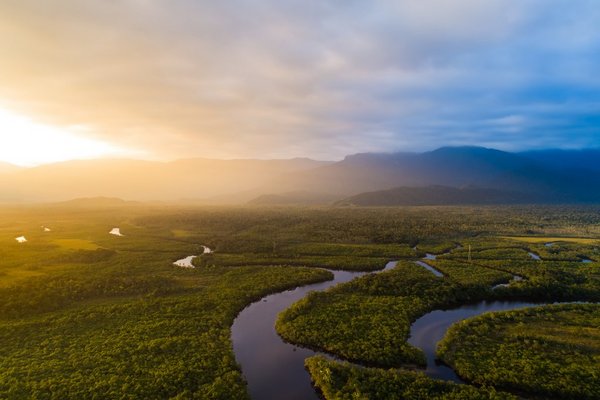- Share this article
- Subscribe to our newsletter
Amazon rainforest degradation endangers South American monsoon
The impacts of global warming, deforestation and intensified land use are pushing the South American monsoon to a critical point of instability. This is the finding of a new study published in October 2023 by researchers from the Potsdam Institute for Climate Impact Research (PIK) and the University of Tromsø (UiT). Once this point is crossed, substantially less rainfall is to be expected in large parts of the South American continent. In turn, this would have major implications for the stability of the Amazon rainforest, as even areas not yet directly affected by land use change would be at risk of dieback.
Moisture exchange between the rainforest and the atmosphere via rainfall and evapotranspiration is a key mechanism in the South American hydro climate. It also helps stabilise the Amazon as a whole because large parts of the moisture precipitating in the western parts of the Amazon and in southern South America stem from the transpiration of trees in the Amazon itself. Degradation – especially in the eastern Amazon, where deforestation rates have been highest in recent years – increases the risk of shortcutting the moisture exchange that is crucial for the South American monsoon and, therefore, the moisture needed to maintain the Amazon rainforest.
The researchers found that the stability of the South American monsoon system has indeed declined in recent decades, likely in response to ongoing climate and land use change and the resulting degradation of the Amazon.
“A collapse of the coupled rainforest–monsoon system would lead to substantial rainfall reductions in large parts of South America,” explains PIK scientist and co-author Niklas Boers. Due to the complexity of this system, however, the potential impacts of a collapse of the monsoon remains very uncertain. Nevertheless, rainfall reductions would be severe, especially in the western Amazon and further downstream of the atmospheric flow towards the subtropics. This would put the deep western Amazon rainforest at risk of a large-scale dieback, which would in turn lead to substantial additional global warming due to an increase in the release of greenhouse gases from the degrading trees. Moreover, a South American monsoon decline could also bring dramatic consequences for food security; for example in the La Plata basin with its extensive agriculture, rainfall depends on the moisture supply stemming from the Amazon.
The study gives significant evidence a critical threshold for the coupled rainforest–monsoon system is approaching. However, the authors stress that no inference on the precise position of the tipping point or its timing can yet be made.
(PIK/ile)
Read more on the PIK website





Add a comment
Be the First to Comment